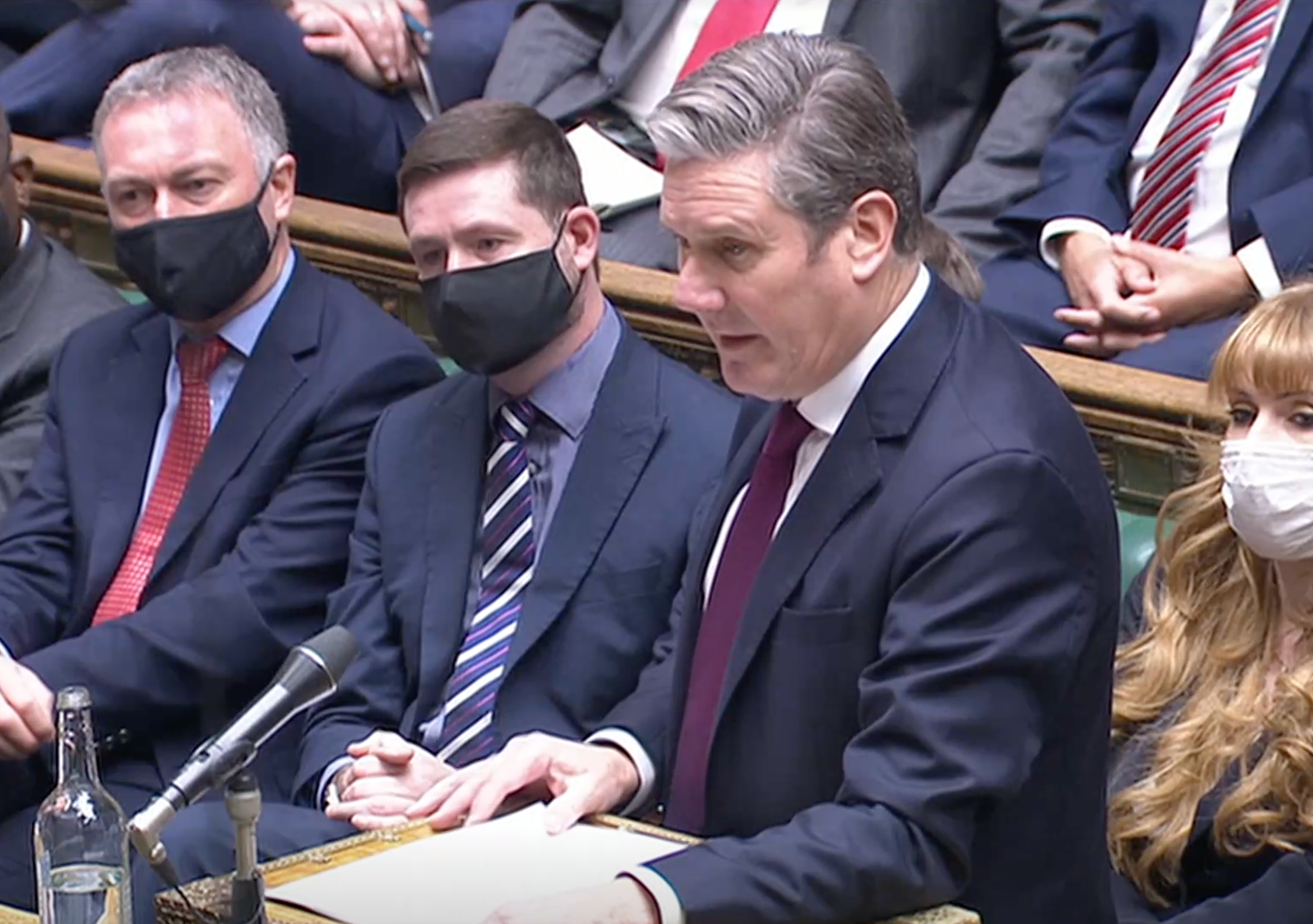What does Labour’s poll boost tell us about their election hopes?
The sleaze scandal looks to have chipped away at Tory support – but Keir Starmer and the Labour Party still face numerous obstacles to forming a one-party government, writes Sean O’Grady

As with the economy and the statistics on health, a combination of Covid and Brexit have created freakish conditions in recent years, rendering the usual measures of success or failure pretty useless. The sharpest recession on record and the greatest public health emergency in a century combined to create a kind of fog around the recent past, let alone the present and future. Much the same goes for opinion polls and even the election results in recent years, such as the radically different 2017 and 2019 general elections, where the older, traditional issues have been overlaid since by Brexit, more latterly Covid, and various “culture wars”. The old concept of a centre ground in politics gave way to an era of polarisation. As the Conservatives secured a larger share of the “working class” vote than Labour, many old assumptions have had to be re-examined.
Now, though the baleful effects of Brexit will be felt for decades and the pandemic is far from over, there are grounds to think a more normal pattern of politics is perhaps reasserting itself. A little. That is certainly the view of a chap named Isaac Levido, who has been advising the Conservatives about psephology since the 2019 election. He recently briefed the cabinet on current trends, and offered the view that Covid was as if a freak wave had indeed passed across the political ocean bed, but which has now passed. The downsides of the Cummings and Hancock scandals, the high death rates and the upside of the vaccine rollout have faded, and old fashioned concerns are starting to worry the voters once again – inflation, jobs, and public services. No doubt sleaze and incompetence doesn’t impress anyone, and the prime minister’s personal ratings have declined, but the most salient issues are decades old. That said, the recent tragic deaths of people in the English Channel and media coverage of migration will also push the issue up the agenda.
As to the polls themselves, the sleaze scandal does seem to have nudged public opinion and made politics between the two main parties more competitive, with some modest Labour leads recorded on the way to a more even showing, with each party around the mid-30s.
There are two ways of looking at this. The first is to set the present levels of party support against the 2019 election result. Labour is up on the 32.1 per cent recorded then, though it’s hardly a spectacular advance (certainly not compared with the solid 40 per cent in Jeremy Corbyn’s high point at the 2017 snap election).
That is still somewhat encouraging for Labour supporters, but there are important caveats. One is that the party is still far behind the Scottish National Party in Labour’s traditional heartlands in Scotland; in fact Labour still just lags behind the Conservatives there. Without a solid phalanx of Scottish Labour MPs it is difficult for Keir Starmer to form a one-party government. It leaves him with the challenge of dealing with the SNP as the election nears, and allegations that he will be under the veto of Nicola Sturgeon.
Labour, paradoxically, would be more confident about the next election if the Liberal Democrats were not becalmed on about 10 per cent, and thus too weak to make more useful inroads into soft Conservative/Remain territory (as when they won Chesham and Amersham in the by-election). The Greens seem to be locking up some of the protest vote that might have gone to Labour, sapping the main opposition party’s progress.
Equally, Labour should be far more ahead of this accident-prone government in what would normally be dubbed its “mid-term blues”, after a tough Budget, scandals and rising prices.
The polls also suggest that the base level of support for the Conservatives may lie at roughly the level of Labour’s current peak, which is reassuring for them. Nonetheless is also suggest that the Tory vote is remarkably “soft”, and some of was truly “lent” to Boris Johnson in December 2019 and is now being reclaimed. The remarkably high Tory vote share of 43.6 per cent in 2019, the best since 1979, could have been a sort of Brexit-fuelled populist aberration.
One unknown for the 2020s is whether there will be another disruptive force coming from the right of the Conservatives, just as Ukip and the Brexit Party tended to sometimes disproportionately take votes, and the very occasional seat, from the Conservatives in the 2010s. John Curtice and his colleagues in the new definitive study of the 2019 election suggest that the Brexit Party’s intervention deprived the Conservatives around 25 seats that would have delivered a properly historic landslide. Brexit may have gone away, sort of, but migration and other cultural issues are still around to make politics more unpredictable, as is the irrepressible Nigel Farage.
Politics, it would seem, is changing once again, with some elements of normality and a competitive opposition re-emerging, but the dealignment from traditional loyalties and assumptions witnessed over the last decade or so is also unlikely to be reversed.



Join our commenting forum
Join thought-provoking conversations, follow other Independent readers and see their replies
Comments